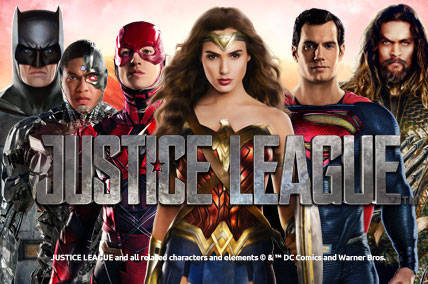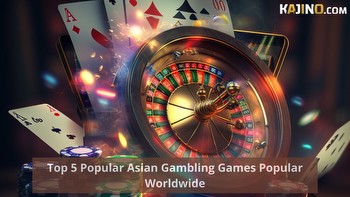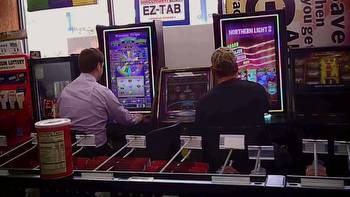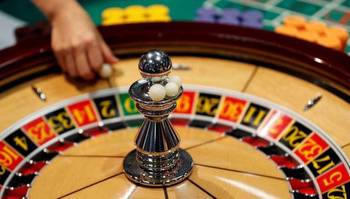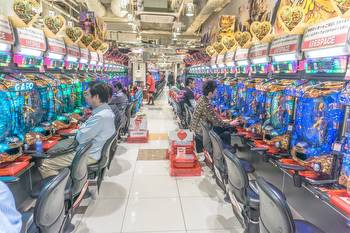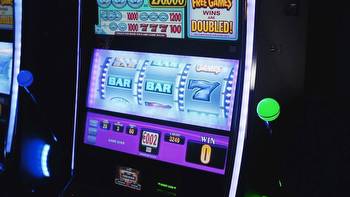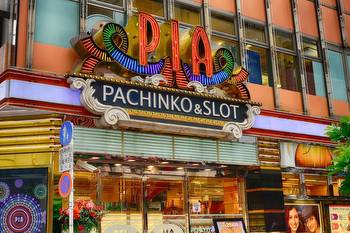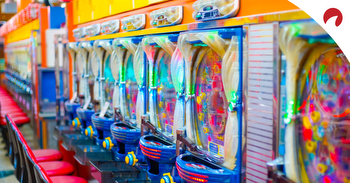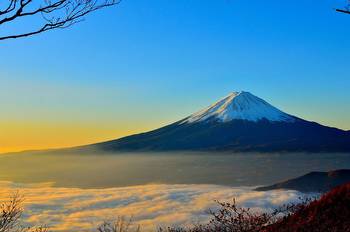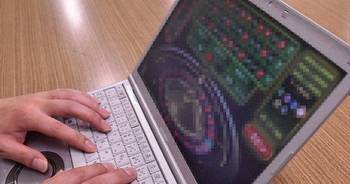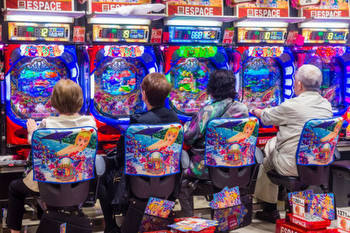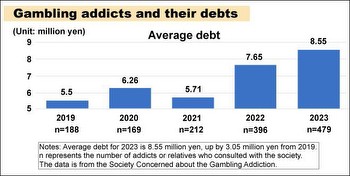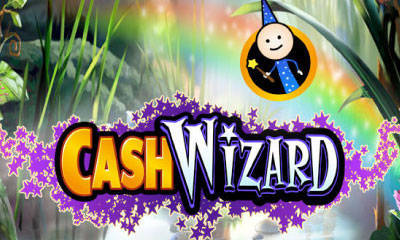Modern Pachinko: The Game That Definitely Isn't Gambling!

“Japanese pinball”, a.k.a. pachinko (パチンコ) has a short but colorful history in Japan. And modern pachinko – with all its flashy gaudiness – looks a fair bit different than its humble predecessor.
But how did the game of pachinko get started? Let’s look at a bit of its history all the way up to the glory – and numerous issues – of modern pachinko.
What is pachinko?
If you’ve ever been to a major city in Japan, you’ve seen modern pachinko parlors. They’re almost impossible to ignore. Many are advertised with gaudy, brightly-lit signs. Even the more subdued ones are dotted with pictures advertising new pachinko and slot machines featuring the latest popular anime and manga characters.
The basics of the game are pretty simple. Players sit at a machine they fancy and insert money. Most machines these days take either bills or some form of IC card, such as Suica or Pasmo. (Yes, you can gamble away your subway money. Good luck getting home, loser.)
Players then press a button to release a certain number (usually in the hundreds) of small, round balls. As the balls snake their way through the machine over a series of pins, players manipulate a dial. The goal is to influence the movement of the balls towards the left through precise movements of the dial.
If users get it right (and if chance allows, of course), the balls start to land in the center of the machine. This is called 大当たり (oo-atari, “the big prize”). A special animation usually scrolls across the screen in the machine’s center, giving players the dopamine rush they so desperately crave.
Different machines can also add in different types of bonus rounds and whatnot to keep players stimulated. Different machines will also incorporate different pin patterns
After players have filled up their ball catcher, they can call a staff member over to exchange the balls for a prize ticket. That ticket can ultimately be redeemed for money[1].
I say “ultimately” because the process is a little circuitous. And it’s circuitous because of pachinko’s odd standing in the Japanese legal system.
Is pachinko gambling?
This may strike you as odd but, legally, pachinko isn’t considered gambling in Japan. The reason has to do with a clever legal loophole that pachinko parlors adopt to circumvent the gambling laws.
In Japan, there are five forms of publicly operated, legal gambling: horse racing (競馬), cycling races (競輪), boat races (競艇), auto racing (オートレース), and the lottery (公営くじ). All other forms of gambling are strictly illegal.
So…what the hell’s up with pachinko, then?! How do they get away with it?
The Three-Store System
Let’s go back to that ticket you got after exchanging in your pachinko balls. Pachinko parlors skirt Japan’s gambling laws through a clever ruse called the three-store system (三点方式; santen houshiki). Pachinko actually runs as three separate businesses:
- The Japanese pinball parlor, where you play the game, earn balls (“medals”) and exchange the balls for a “prize” (景品). This is where your ticket comes in: you exchange your tickets of collected balls for the prize. The prize is generally a card holding some amount of metal (silver, gold) of actual monetary value.
- A “prize exchange center”, where you can exchange the prizes you received from the pachinko store for cash.
- A wholesale distributor, who buys the exchanged prizes from the prize exchange center and sells them back to the pachinko store.
In other words, the “pachinko parlor” isn’t running a gambling operation because it’s not exchanging your ticket for money – just “prizes”[2]. This means that, legally, pachinko parlors don’t fall under the country’s laws regulating gambling. Rather, they call under the laws regulating entertainment, nightlife, and the sex industry (風営法; fuueihou).
The system has another benefit for gamble- oops, sorry pachinko players: winnings arent’ taxed like gambling winnings. If you win money through a form of state-run gambling (e.g., horse racing), you’ll pay taxes on any proceeds. Since pachinko stores don’t fall under the gambling laws, the same tax rules don’t apply.
While this system works, it only works if pachinko parlor employees follow strict rules. For example, if you ask a pachinko parlor employee where to find a prize exchange center, they won’t tell you. The parlor and the exchange center must have zero ties to one another. If employees start telling you how to change your prizes in for cash, that’s evidence of a tie – and would make the business illegal under Japanese law.
A history of classic and modern pachinko
Like pinball in the United States, pachinko owes its origins to the French game bagatelle. In bagatelle, players launched a ball and attempted to land it in holes placed across the board.
Japanese pachinko was similar to bagatelle. In the early half of the 20th century, it existed as both a kids’ game and a gambling game for adults. The first “modern pachinko parlor” is thought to have been launched by Nagoya resident Hirono Hama in 1930.
The first pachinko games were largely games of chance that used an evenly distributed assortment of pins. That changed in 1948 with the creation of the Masamura pachinko gauge (正村ゲージ). Creator Masamura Takeuchi of Nagoya created several additional pin variations that helped add an additional element of skill to the game. His innovations became so popular that other pachinko parlors started using them. Most of these pin arrangements are still in use in modern pachinko machines[3].
Masamura’s invention sparked a pachinko boom across Japan. The game continued to change with the advent of modern electronics, computer microprocessors, and LCD screens. A variation of pachinko, the pachinko slot (パチスロ; pachi-suro) was invented in 1977 and remains popular today.
Pachino still remains a big business today. Pre-pandemic, the industry made around 21 trillion yen (around USD $158 billion) in yearly sales.
Has modern pachinko made Japan a “gambling kingdom”?
Pachinko’s been the center of various controversies over the years. For example, some reporterts have questioned the close ties between the world of pachinko and the police department. The police and related organizations are in charge of overseeing pachinko and certifying games for use. As a result, a number of executives at pachinko companies and organizations are former police officers. Reporters such as Terazawa Yuu have accused the police of going soft on pachinko businesses in hop4s of receiving lucrative jobs in the future.
But by far the most pressing problem arising from pachinko is addiction.
In 2017, the Kurihama Medical Center launched a nationwide survey to assess Japan’s gambling habits. The results were astonishing. Based on survey results, the center determined that around 3.6% of people in Japan may suffer from a gambling addiction. That’s significantly higher than most Western nations[5]. The problem is most pronounced in men: 6.7% of Japanese men, according to the study, may be gambling addicts.
One caveat to that story is that survey takers were asked about their lifetime experience. Therefore, some of the respondents may not currently be in the throes of a gambling addiction.
However, on the flip side, people are gambling more on pachinko than they used to. In 1989, some 30 million people reported playing pachinko. By 2017, that number had plummeted to 9 million. However, the average amount spent per person on the game has increased almost fourfold.
The number of pachinko and pachinko slot machines in Japan also dwarfs gambling machines in other countries. The United States, for example, boasts some 865,000 machines. (I swear to God that half of those must be in the Las Vegas airport terminal alone.) By contrast, in 2016, Japan boasted a whopping 4.57 million machines[6]. These stats have led some in the press to christen Japan as a “gambling kingdom” (ギャンブル大国; gyanburu ookoku).
“If Pachinko’s okay, why not casinos?!”
Recently, pachinko’s found itself in the center of the debate regarding casinos in Japan. Former Prime Minister Abe Shinzou fought hard to introduce “Integrated Resorts” (casino hotels) to the country. Casinos, after all, are a great way to relieve foreign tourists of their extra cash.
The Integrated Resort law was passed in 2018. (As of this writing, no casinos have actually opened, and it’s likely the first won’t open until 2025 or later.) However, several opposition parties opposed the IR law due to concerns about gambling addiction.
The opposition faced a backlash from some in the public. Why, they asked, were these politicians so concerned about casinos but not about pachinko?!
One person who actually had a good answer to that question was Tanaka Noriko. Tanaka, the head of the non profit org Thinking About Gambling Addiction (ぎゃ㎜ブル依存症を考える会), is herself a former boat racing gambling addict. Her grandfather and father also struggled with pachinko addictions. Tanaka had reservations about the introduction of casinos because, in her words:
「パチンコなどがこれほど街にあふれている国はほかにない。なのに依存症についての理解は低く、対策も置き去りになってきたのが日本の現状だ」
Japan is unique in how games like pachinko abound in our towns. But the reality is that we have a weak understanding of addiction and no strategy for addressing it.
Before the country debated introducing casinos, Tanaka intended, it needed to tax all gambling – including pachinko – to help fund care for people struggling with gambling addiction.
Is modern pachinko dying?
Despite its ubiquity, pachinko isn’t as popular as it used to be. The number of players keeps dropping – as do the pachinko world’s profits. As of 2020, only about 7 million people report playing pachinko.
Then there’s the pandemic. Pachinko parlors were forced to close when Japan passed the first of several emergency declarations. Many restaurants manage to hang on during the pandemic by resorting to takeout and delivery service. Sadly for pachinko parlors, there’s no easy way to provide takeout pachinko service. As a result, industry sales dropped a whopping 6 trillion yen (around USD $44B) during the pandemic.
Whether pachinko picks back up post-pandemic remains to be seen. Still, while the game’s not as popular as it used to be, it doesn’t show any signs of disappearing entirely. In spite of everything, pachinko is still big business.
What to read next
Footnotes
[1] 【初心者入門】パチンコのやり方、おすすめの台選びや店内での注意点を解説. Pachi 7
[2] パチスロは公営ギャンブルじゃないのになぜ換金できる!?「三店方式」をわかりやすく解説!Gameのススメ
[3] 【天釘、命釘 etc.】ゲージの各名称、役割を把握して台のクセを見抜こう!Nana Press
[4] パチンコ・パチスロ業界概説. Creative Village







